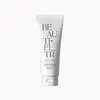What's inside
What's inside
 Key Ingredients
Key Ingredients

 Benefits
Benefits

 Concerns
Concerns

 Ingredients Side-by-side
Ingredients Side-by-side

Octocrylene 7%
UV AbsorberButyl Methoxydibenzoylmethane 2.5%
UV AbsorberBis-Ethylhexyloxyphenol Methoxyphenyl Triazine 2%
Skin ConditioningPhenylbenzimidazole Sulfonic Acid 2%
UV AbsorberWater
Skin ConditioningEthylhexylglycerin
Skin ConditioningPhenoxyethanol
PreservativeIodopropynyl Butylcarbamate
PreservativeGlycerin
HumectantDisodium EDTA
Sodium Hydroxide
BufferingC12-15 Alkyl Benzoate
AntimicrobialPotassium Cetyl Phosphate
EmulsifyingSorbitan Stearate
EmulsifyingTocopheryl Acetate
AntioxidantCetearyl Alcohol
EmollientGlyceryl Stearate
EmollientCarbomer
Emulsion StabilisingAllantoin
Skin ConditioningSodium Hyaluronate
HumectantPanthenol
Skin ConditioningBisabolol
MaskingCI 77492
Cosmetic ColorantCI 77499
Cosmetic ColorantCI 77491
Cosmetic ColorantOctocrylene 7%, Butyl Methoxydibenzoylmethane 2.5%, Bis-Ethylhexyloxyphenol Methoxyphenyl Triazine 2%, Phenylbenzimidazole Sulfonic Acid 2%, Water, Ethylhexylglycerin, Phenoxyethanol, Iodopropynyl Butylcarbamate, Glycerin, Disodium EDTA, Sodium Hydroxide, C12-15 Alkyl Benzoate, Potassium Cetyl Phosphate, Sorbitan Stearate, Tocopheryl Acetate, Cetearyl Alcohol, Glyceryl Stearate, Carbomer, Allantoin, Sodium Hyaluronate, Panthenol, Bisabolol, CI 77492, CI 77499, CI 77491
Zinc Oxide 12%
Cosmetic ColorantWater
Skin ConditioningC12-15 Alkyl Benzoate
AntimicrobialButyloctyl Salicylate
Skin ConditioningIsododecane
EmollientLauryl PEG-8 Dimethicone
Mica
Cosmetic ColorantPropanediol
SolventDimethicone
EmollientCaprylyl Methicone
Skin ConditioningNiacinamide
SmoothingTridecyl Salicylate
Skin ConditioningDimethiconol
EmollientTrilaureth-4 Phosphate
EmulsifyingLauryl PEG-10 Tris(Trimethylsiloxy)Silylethyl Dimethicone
EmulsifyingSynthetic Fluorphlogopite
Maltodextrin
AbsorbentSodium Chloride
MaskingBisabolol
MaskingDimethicone/Vinyl Dimethicone Crosspolymer
Skin ConditioningDisodium Lauriminodipropionate
CleansingTocopheryl Phosphate
CleansingEthylhexylglycerin
Skin ConditioningAllantoin
Skin ConditioningTremella Fuciformis Sporocarp Extract
AntioxidantDimethylmethoxy Chromanol
AntioxidantCaesalpinia Spinosa Fruit Pod Extract
Helianthus Annuus Sprout Extract
Skin ConditioningCaprylyl Glycol
EmollientHexylene Glycol
EmulsifyingTetrasodium Glutamate Diacetate
Isoceteth-10
EmulsifyingSilica
AbrasiveTin Oxide
AbrasiveSodium Hydroxide
BufferingPhenoxyethanol
PreservativeDehydroacetic Acid
PreservativeSodium Benzoate
MaskingBenzoic Acid
MaskingTitanium Dioxide
Cosmetic ColorantCI 77891
Cosmetic ColorantIron Oxides
Zinc Oxide 12%, Water, C12-15 Alkyl Benzoate, Butyloctyl Salicylate, Isododecane, Lauryl PEG-8 Dimethicone, Mica, Propanediol, Dimethicone, Caprylyl Methicone, Niacinamide, Tridecyl Salicylate, Dimethiconol, Trilaureth-4 Phosphate, Lauryl PEG-10 Tris(Trimethylsiloxy)Silylethyl Dimethicone, Synthetic Fluorphlogopite, Maltodextrin, Sodium Chloride, Bisabolol, Dimethicone/Vinyl Dimethicone Crosspolymer, Disodium Lauriminodipropionate, Tocopheryl Phosphate, Ethylhexylglycerin, Allantoin, Tremella Fuciformis Sporocarp Extract, Dimethylmethoxy Chromanol, Caesalpinia Spinosa Fruit Pod Extract, Helianthus Annuus Sprout Extract, Caprylyl Glycol, Hexylene Glycol, Tetrasodium Glutamate Diacetate, Isoceteth-10, Silica, Tin Oxide, Sodium Hydroxide, Phenoxyethanol, Dehydroacetic Acid, Sodium Benzoate, Benzoic Acid, Titanium Dioxide, CI 77891, Iron Oxides
 Reviews
Reviews

Ingredients Explained
These ingredients are found in both products.
Ingredients higher up in an ingredient list are typically present in a larger amount.
Allantoin is a soothing ingredient known for its protective and moisturizingg properties. Because of this, it is often added to products with strong active ingredients.
Studies show higher concentrations of this ingredient can promote wound healing.
Though it can be derived from the comfrey plant, allantoin is produced synthetically for cosmetic products to ensure purity.
Learn more about AllantoinBisabolol is famous for its skin soothing properties. It does this by blocking inflammatory signals, helping to reduce your body's reaction to irritation.
This ingredient also interferes with the process of hyperpigmentation. This can help with reducing dark spots and uneven tone.
Bisabolol is an antioxidant. Antioxidants help fight free-radicals. Free-radicals are molecules that may damage your skin cells. By fighting these free-radicals, Bisabolol may slow down signs of aging.
Studies have shown Bisabolol to have antimicrobial properties and may be a fungicide. These properties help preserve a product's shelf life.
All these properties makes bisabolol a great skin barrier helper ingredient.
Bisabolol also helps the absorption of other ingredients.
Note: Synthetic Bisabolol has been shown to be less effective.
Learn more about BisabololC12-15 Alkyl Benzoate is made up of Benzoic Acid and long chain alcohols. It has a low molecular weight.
C12-15 Alkyl Benzoate is an emollient and texture enhancer. Due to its solubility, it is often used in sunscreens to help evenly distribute active ingredients.
As an emollient, C12-15 Alkyl Benzoate helps soften and hydrate your skin. Emollients create a film on your skin that traps moisture within.
This ingredient has been reported to cause eye irritation.
Learn more about C12-15 Alkyl BenzoateEthylhexylglycerin (we can't pronounce this either) is commonly used as a preservative and skin softener. It is derived from glyceryl.
You might see Ethylhexylglycerin often paired with other preservatives such as phenoxyethanol. Ethylhexylglycerin has been found to increase the effectiveness of these other preservatives.
Phenoxyethanol is a preservative that has germicide, antimicrobial, and aromatic properties. Studies show that phenoxyethanol can prevent microbial growth. By itself, it has a scent that is similar to that of a rose.
It's often used in formulations along with Caprylyl Glycol to preserve the shelf life of products.
Sodium Hydroxide is also known as lye or caustic soda. It is used to adjust the pH of products; many ingredients require a specific pH to be effective.
In small amounts, sodium hydroxide is considered safe to use. However, large amounts may cause chemical burns due to its high alkaline.
Your skin has a natural pH and acid mantle. This acid mantle helps prevent harmful bacteria from breaking through. The acid mantle also helps keep your skin hydrated.
"Alkaline" refers to a high pH level. A low pH level would be considered acidic.
Learn more about Sodium HydroxideWater. It's the most common cosmetic ingredient of all. You'll usually see it at the top of ingredient lists, meaning that it makes up the largest part of the product.
So why is it so popular? Water most often acts as a solvent - this means that it helps dissolve other ingredients into the formulation.
You'll also recognize water as that liquid we all need to stay alive. If you see this, drink a glass of water. Stay hydrated!
Learn more about Water